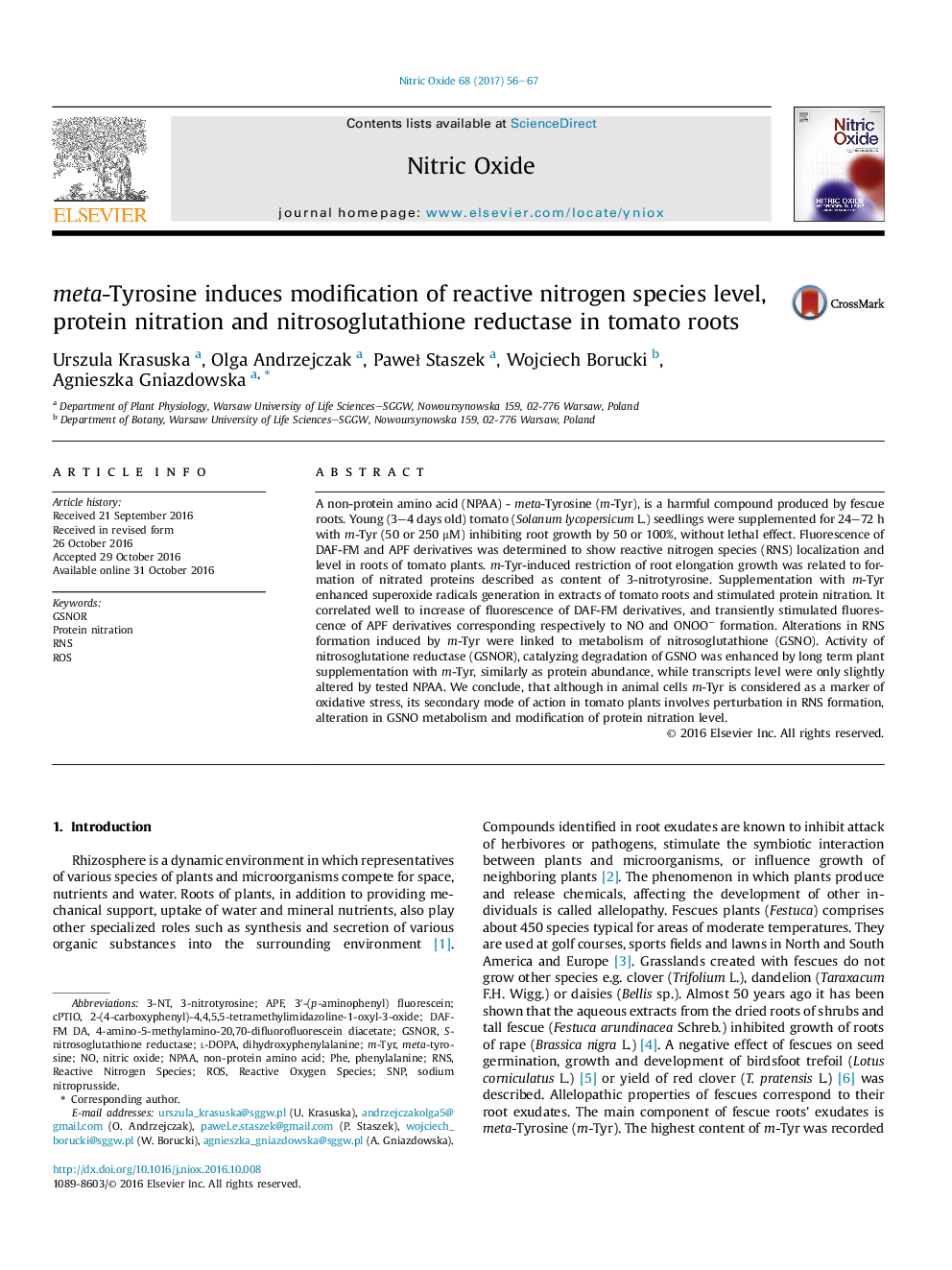| Article ID | Journal | Published Year | Pages | File Type |
|---|---|---|---|---|
| 5514212 | Nitric Oxide | 2017 | 12 Pages |
â¢m-Tyr enhances RNS level in tomato roots.â¢m-Tyr indirect mode of action is linked to induction of nitrosative stress.â¢Increase of content of nitrated proteins corresponds to m-Tyr phytotoxicity.â¢Long term exposition of plants to m-Tyr enhances GSNOR activity.â¢m-Tyr has slight impact on GSNOR protein level and gene expression.
A non-protein amino acid (NPAA) - meta-Tyrosine (m-Tyr), is a harmful compound produced by fescue roots. Young (3-4 days old) tomato (Solanum lycopersicum L.) seedlings were supplemented for 24-72 h with m-Tyr (50 or 250 μM) inhibiting root growth by 50 or 100%, without lethal effect. Fluorescence of DAF-FM and APF derivatives was determined to show reactive nitrogen species (RNS) localization and level in roots of tomato plants. m-Tyr-induced restriction of root elongation growth was related to formation of nitrated proteins described as content of 3-nitrotyrosine. Supplementation with m-Tyr enhanced superoxide radicals generation in extracts of tomato roots and stimulated protein nitration. It correlated well to increase of fluorescence of DAF-FM derivatives, and transiently stimulated fluorescence of APF derivatives corresponding respectively to NO and ONOOâ formation. Alterations in RNS formation induced by m-Tyr were linked to metabolism of nitrosoglutathione (GSNO). Activity of nitrosoglutatione reductase (GSNOR), catalyzing degradation of GSNO was enhanced by long term plant supplementation with m-Tyr, similarly as protein abundance, while transcripts level were only slightly altered by tested NPAA. We conclude, that although in animal cells m-Tyr is considered as a marker of oxidative stress, its secondary mode of action in tomato plants involves perturbation in RNS formation, alteration in GSNO metabolism and modification of protein nitration level.
